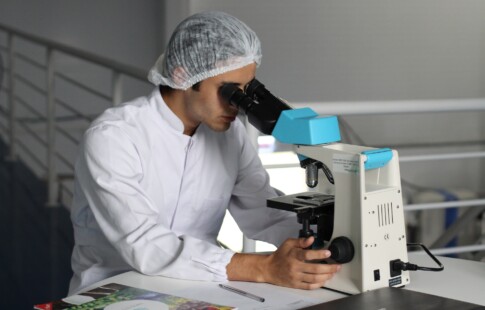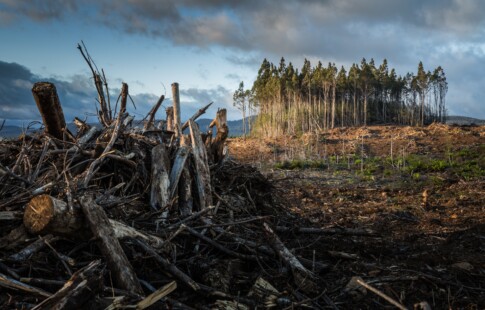
3 Exciting Farming Methods for a Sustainable Future
We are reader-supported. When you buy through links on our site, we may earn affiliate commission.
Without agriculture, people would still be roaming the earth in nomadic groups. Plants provide everything from building materials to medicine, food and clothing. Farming gives people the support they need to stay in place and expand industries. Since people began to farm, they’ve learned to cultivate plants in many different ways. Some modern methods of farming deplete nutrients in the soil and negatively impact the environment. However, many other farming practices are eco-friendly.
Here are three exciting farming methods that support a sustainable future.
- Regenerative Farming
Regenerative farming focuses on replenishing soil health. You might think of soil as a messy substance to avoid when you go outside. However, healthy soil is a thriving ecosystem of its own. It’s filled with life-giving bacteria, mycorrhizae and other organisms that support plant growth and create layers of nutrient-rich topsoil.
Healthy soil has a structure that protects plants from drought and disease. It expands the reach of new roots so that crops can absorb more nutrients from the soil with less work. If the soil is left undisturbed, it gets healthier every year – old root systems and worms create tunnels that aerate deep soil and support new growth.
Unfortunately, many modern farming methods interrupt this natural cycle. Synthetic fertilizers and pesticides kill valuable organisms in the soil. Tilling dries out the soil and disrupts the underground tunnels from last year’s growth. Instead of using these practices, some farmers are turning to cover crops and organic fertilizers to promote soil health and nutrient-rich crops.
Permaculture farming takes these principles a step further and integrates crops into a natural environment with minimal disturbance. Instead of growing one crop, permaculture farmers grow many different native plants together. Many permaculture farmers use livestock to fertilize their soil and help maintain a balanced ecosystem on their property.
- Dry Farming
Most farmers rely on water for irrigation to keep their crops healthy and thriving. However, irrigation is expensive and water can be scarce depending on location. Dry farming uses regenerative farming principles to grow crops in areas with minimal irrigation or rainwater.
Many dry farmers avoid tilling because it leads to soil erosion and dries out the soil. Instead, farmers will plant cover crops that naturally aerate the soil without reducing its moisture content. Crop rotation can ensure the land maintains a high level of nutrients to sustain years of agriculture without tilling compost into the soil.
Soil with a high content of organic matter can retain a lot of moisture. Dry farmers work to improve their soil with organic compost and cover mulch that breaks down over time. These materials enrich the soil while maintaining a high moisture content and supporting healthy plants.
Some dry farmers also use cattle to fertilize their fields and incorporate more organic matter into the soil. Some soil scientists say that just 1% more organic matter in your soil will increase its water absorption by 20,000 gallons an acre. In healthy soil, every drop of water from rain or irrigation goes further.
- Aquaponics
In areas where soil health is especially poor, some farmers bypass soil completely by using hydroponic and aquaponic systems. Hydroponic systems grow plants in water with added chemical nutrients. Aquaponics is even more productive, combining fish and plants in one sustainable system.
Aquaponic farms operate on a closed-loop system where water is recycled and reused continuously. Many aquaponics farmers choose to raise tilapia, as this fish species will self-regulate its population to suit its tank size. Plants are grown on top of fish tanks with their root systems submerged in the water. Instead of soil, farmers use grow media like lava or clay rocks.
Fish poop gives the plants the nutrients they need to thrive. Farmers top off tank water occasionally as full-grown plants displace some water through transpiration. However, aquaponics farmers don’t have to worry about soil health or how much rainwater their crops will receive.
After fish are full-grown, farmers can harvest some of them to eat or sell. They can replace old plants with new ones by parting the growth media and sending new roots down into the water. Aquaponics systems have little to no impact on the surrounding ecosystem and are a good choice for farmers who don’t have access to rich soil.
The Future of Sustainable Farming
The most eco-friendly farming practices work with the land instead of against it. This partnership produces healthy soil and thriving produce that will keep coming for years into the future. Farmers who invest in healthy soil will see reduced costs and resilience against disease, drought and soil erosion.
Many modern farmers are using regenerative farming principles to combat depleted soil and a lack of water. Other farmers are bypassing soil altogether with aquaponics, raising fish and plants within a sustainable system. These three methods are an exciting picture of how sustainable farming practices can support humanity and the planet for many years into the future.
Share on
Like what you read? Join other Environment.co readers!
Get the latest updates on our planet by subscribing to the Environment.co newsletter!
About the author
Jane Marsh
Starting from an early age, Jane Marsh loved all animals and became a budding environmentalist. Now, Jane works as the Editor-in-Chief of Environment.co where she covers topics related to climate policy, renewable energy, the food industry, and more.





